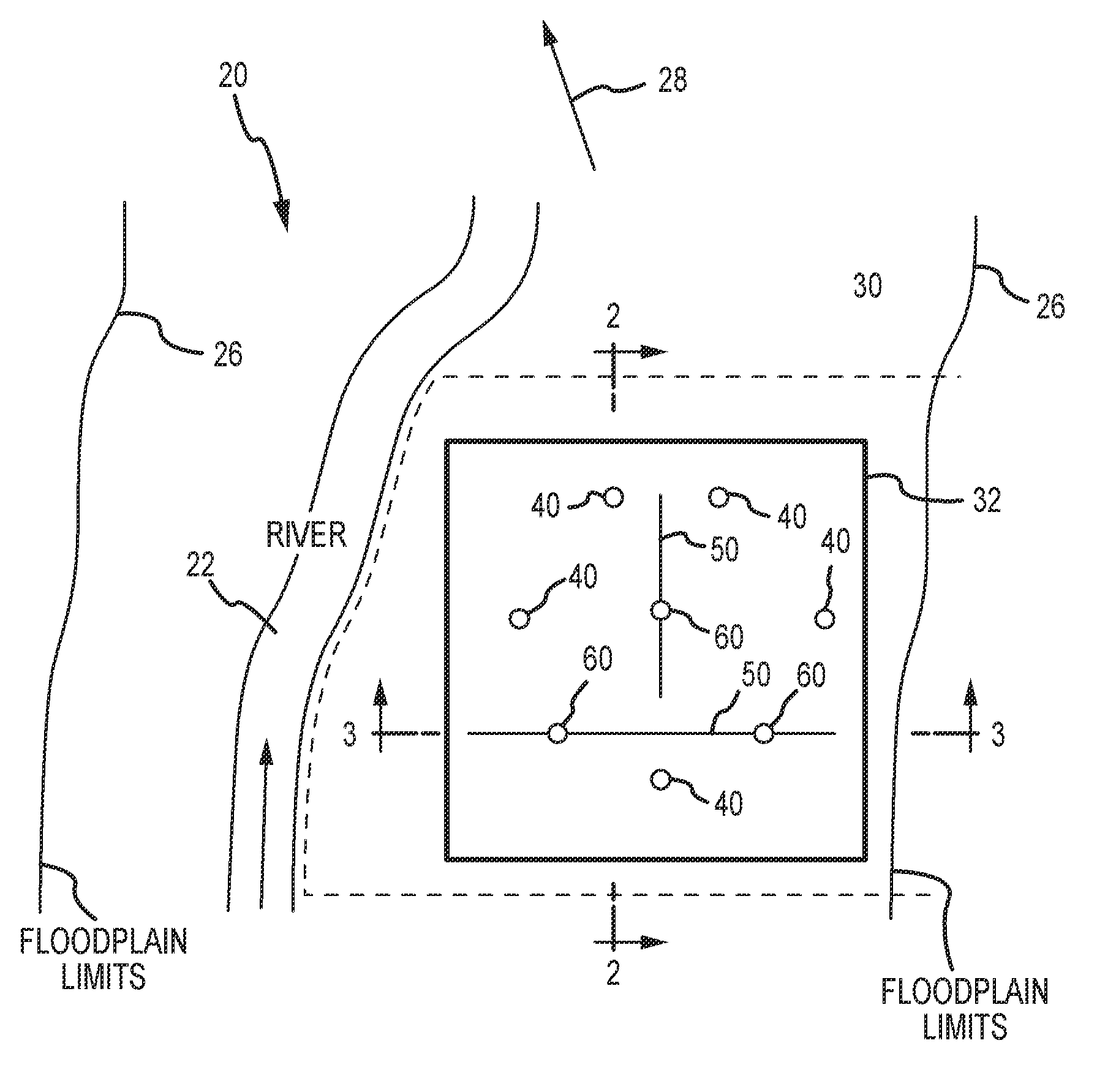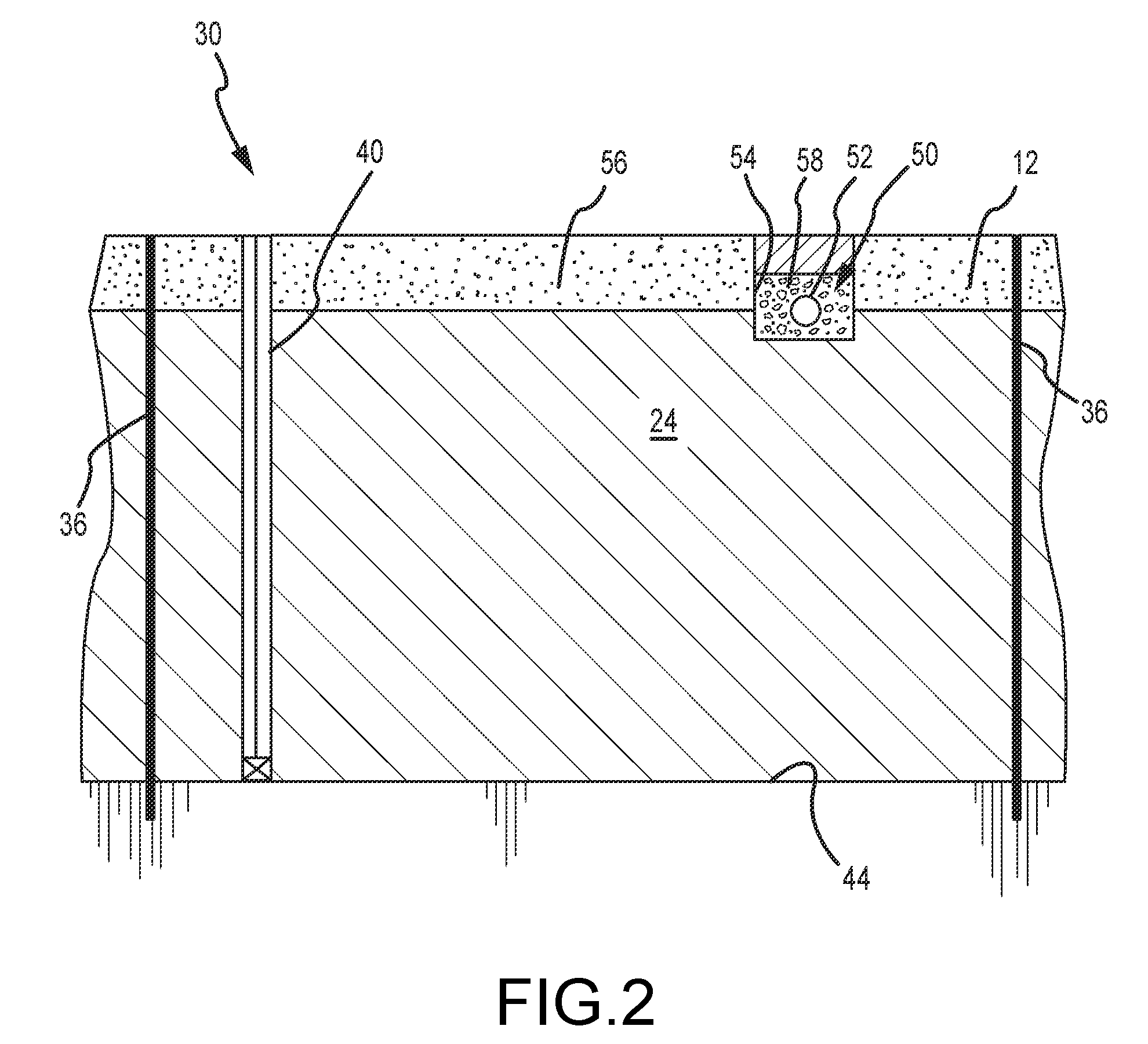Ventilation of underground porosity storage reservoirs
a porosity reservoir and underground technology, applied in drinking water installation, borehole/well accessories, constructions, etc., can solve the problems of increasing the cost and site availability of conventional open reservoirs for the storage of water, severely curtailing the flow of water downstream, and becoming prohibitively difficult to form an open reservoir in this manner
- Summary
- Abstract
- Description
- Claims
- Application Information
AI Technical Summary
Benefits of technology
Problems solved by technology
Method used
Image
Examples
Embodiment Construction
[0019]FIG. 1 illustrates an exemplary underground reservoir system in accordance with the present invention. In particular, FIG. 1 illustrates a plan view of an exemplary river system or basin 20 comprising a riverbed 22 that flows along the top of alluvial deposits 24 (FIG. 2) formed within the boundary 26 of a floodplain that extends to either side of the current riverbed 22. An arrow 28 in FIG. 1 illustrates a direction of flow of the groundwater through the alluvial deposits 24. An underground porosity storage reservoir 30 is typically formed with a regular geometric boundary 32. FIG. 1 further illustrates the position of a plurality of extraction / recharge wells 40, air ventilation conduits 50, and air vents 60 within the porosity reservoir 30, as described in greater detail below. Additional details regarding the design, construction and technical aspects of underground reservoirs are disclosed within U.S. Pat. No. 6,840,710, incorporated by reference above.
[0020]FIG. 2 provide...
PUM
 Login to View More
Login to View More Abstract
Description
Claims
Application Information
 Login to View More
Login to View More - R&D
- Intellectual Property
- Life Sciences
- Materials
- Tech Scout
- Unparalleled Data Quality
- Higher Quality Content
- 60% Fewer Hallucinations
Browse by: Latest US Patents, China's latest patents, Technical Efficacy Thesaurus, Application Domain, Technology Topic, Popular Technical Reports.
© 2025 PatSnap. All rights reserved.Legal|Privacy policy|Modern Slavery Act Transparency Statement|Sitemap|About US| Contact US: help@patsnap.com



